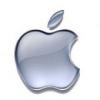-
Posts
10041 -
Joined
-
Last visited
-
Days Won
563
Content Type
Profiles
Articles, News and Tips
Forums
Posts posted by Hervé
-
-
Have a look at the Wiki pages of osx86 project web site (Tiger 10.4.11 or Leopard 10.5.6 - alternatively look for Leopard 10.5.8 for Inspiron 6000)
-
Actually, the D800 is Pentium M/Centrino based with Intel 855PM chipset, so it runs on Banias or FSB400-Dothan CPUs. Best CPU would be PM 765 at 2.16GHz with 2Mo L2 cache. That laptop uses DDR SDRAM, AGP nVidia graphics and an IDE/PATA HDD controller.
That is getting pretty ancient and, indeed, Leopard is probably the best possible OS X candidate. A quick search showed that this laptop has been successfully hacked on Tiger; that shows how old it is...
I have an Inspiron 6000, a nearly-as-ancient but slightly better model, with chipset 915GM, i.e. support for FSB533 CPUs (which I run as an overclock). I still haven't managed to install SL on it (mostly because I have trouble getting the ICH6 controller supported), so it remains on Leopard 10.5.8.By all means, have a go at hacking it with ModCD and retail Snow Leopard (ideally 10.6.3). That will use a legacy kernel, i.e. the only supported kernel you could operate on that system. But do not expect much out of that.
-
Try and reboot in your OS X partition via your USB install pen. If that succeeds, check your boot plist in /Extra and give us the list of checked/selected parameters. I think it needs npci=0x2000 for ML (well, the D630 nVidia does, to boot ML).
-
Have a look in the BIOS for the sound card model. I know it's listed on Latitude D models, hopefully it'll be the same on your Vostro. Then we can look for the right driver, if it exists.
For the Mouse/TrackPad, you could try and install some of the well-known kexts like VoodooPS2 or Slice's kexts.
-
Hmm, is it reported in the BIOS in System->Device Info (top line)?
-
Once you boot your HDD OS X partition via USB key, just re-run EDP and re-install Chameleon (menu 3: installer). That will take care of things. Alternatively, check in /Download folder, you'll probably find a copy of Chameleon package there. Double click on it to re-install.
-
You sure got there! And, oh, update that old BIOS to A17 or A18.
To install Chameleon, run EDP -> menu 3 'Installer'. Once it's installed, try and install Chameleon Wizard too. It's a great tool to modify contents of Boot plist (in /Extra), edit SMBIOS plist or update Chameleon version.
-
-
Tut mir Leid, my mistake, I missed that point in your earlier post.
It appears you've followed the correct process to create the key (assuming you chose "Create 10.7 installer") and begin installation, but I am wondering if you did not point to the wrong image for Lion. Did you point to the "InstallESD.dmg' image found inside the Lion image package when prompted for the Lion image (right click on Lion package then go to Contents->SharedSupport)?
-
I'm confused... Which version of Mac OS are you trying to install? I understood it was Snow Leopard.
For SL, use the D630 nVidia SL bootpack.
For Lion, use the D630 nVidia Lion bootpack.
Don't mix OS X versions and bootpacks.
-
Hmm, I see those 2 lines with "Invalid firmware - ...".
I encountered that during very early attempts to install SL on my D630. Turned out I was not using the correct DSDT table (DSDT for Intel X3100 LoRes, as opposed to Intel X3100 HiRes).
You were booting off the installation media. Are you sure you installed the correct Bootpack? Try and boot with -x -f -v options.
-
Sounds like you'd need to re-install Chameleon bootloader.
-
Yes, create a Lion USB installer using myHack and then create a /Extra with myHack using the D630 Intel LoRes bootpack. You could keep the D630 DSDT to start with and hope for the best, failing that, simply delete it.
-
Lion is Ok on D630, yes, with ML Ok on D630 with nVidia GPU. What I meant was that, for SL, I never did the installation with a release lower than retail 10.6.3, so I have no past experience with 10.6/10.6.1/10.6.2.
A few changes/notes in your list:
1) make that partition GUID, not MBR
4) create /Extra with myHack and point to downloaded model-specific bootpack when prompted for "Generic/Own...", selecting "Own..."
5) that is not required
7) at end of installation, when prompted for /Extra folder, simply point to the /Extra folder of your installation media (it will have the bootpack contents)
The rest is spot on. Grüße.
-
Hi Alan,
You seem to be going in there blind or partially blind. Unless you clearly know what each kext does, your method of adding/removing kexts and then checking resulting impact/behaviour is simply wrong. This is not a lottery where you simply mix things and hope to get the correct combination. That's the impression I got from reading your posts but maybe I'm wrong...
You're probably aware that these days, the OS controls power management through a norm called ACPI. The DSDT table is the main table in the ACPI part of a computer's BIOS. It provides to the OS, information about the hardware in order to support/manage it as best as possible. There are tools to extract that table from the BIOS, fix/patch this extraction and compile it for re-use by Mac OS X. Olarila provides such an extraction tool that works from MS Windows.
If I were you, I'd simply abandon this ML installation attempt and revert to Lion. There's a good chance that you will get a near-complete installation using the D630 Intel X3100 bootpack (the DSDT table will in all likelyhood be unusable and need deletion from /Extra) since hardware appears very similar on the Vostro.
-
If you think you deleted something by mistake (like your boot plist - not a good idea), I'd suggest you re-run EDP and re-install your model-specific kexts. That'll rebuild your /Extra folder + plists.
-
Which audio kext did you install? Try to add the Soundflower tool from EDP.
-
I've never tried with lower then SL 10.6.3. That's my retail version. If it's possible for you, I'd recommend you try that release.
-
Tools -> Console
Then look in the system log. Place a mark or take a note of the timings if necessary.
-
Which release of SL are you trying to install? Could you redo your myHack USB key creation and take a note of all your steps to report back?
-
Here are BIOS settings that are known to work on D620 GMA950 + nVidia 110M under SL, Lion and ML (MLPF). These settings were tested and verified with BIOS A07 + A10.
Onboard Devices:
. Fast IR = COM2
. Integrated NIC = enabled
. Internel modem = enabled
. External USB ports = enabled
. Integrated USB ports = High Speed
. Parallel port = ECP
. Serial port = COM1
. PC Card = Enabled
Video:
. Ambient Light Sensor = Off
. Brightness = max
. Brightness (AC) = max
. LCD Panel Expansion = enabled
. Primary Video = Onboard Video
Security:
. Admin Password = not set
. System Password = not set (*** mandatory on GMA950 models or BSOD (=crash) on wake ***)
. Internal HDD PW = not set
. Password Change = Permitted
. Password Bypass = Reboot & Resume Bypass (mandatory on GMA models)
. Wireless Switch Change = Denied
. Wi-Fi Catcher Change = Denied
. CPU XD Support = Enabled
. TPM Security = Off or On
. TPM Activation = Deactivate or Activate
. Computrace® = Deactivate
Performance:
. Multi Core Support = Enabled
. HDD Acoustic Mode = Performance (or any other value)
. SpeedStep Enable = Enabled
Power Management:
. Auto On Mode = Off
. Auto On Time = xxxxxx
. USB Wake Support = Off (USB wake only operates when laptop is on mains and then causes Sleep/Instant Wake issues)
. Wake on LAN/WLAN = Off
. Serial ATA DIPM = Enabled
Docking:
. Undocking Method = Hot Undock
. PCI Slot Monitoring = Enabled Silent
. Universal Connect = Enabled
POST Behavior:
. Adapter Warnings = Enabled
. Fn Key Emulation = Scroll Lock
. Fast Boot = Minimal
. Virtualization = Enabled or Disabled (only required to run virtual machines)
. Keypad (Embedded) = Fn Key Only
. Mouse/TouchPad = Touchpad-PS/2
. Numlock LED = On
. USB Emulation = Enabled
Wireless:
. Internal Bluetooth = Enabled
. Internal Wi-Fi = Enabled (keep to Disabled if you have an Intel card, they're not supported and need to be replaced)
. Internal Cellular = Enabled
. Wireless Switch = All
. Wi-Fi Catcher = Enabled
The above settings are compatible with sleep/wake mode of operation and use of Wireless on/off switch. BT + Wifi services resume on wake + wireless switch re-activation (Wifi may require manual network re-selection after the latter).
 'System password' MUST be set on GMA models for wake from sleep to operate. Otherwise, laptop with crash systematically on wake. nVidia models are not affected by this problem.
'System password' MUST be set on GMA models for wake from sleep to operate. Otherwise, laptop with crash systematically on wake. nVidia models are not affected by this problem. 'USB Wake Support' MUST be set to Off on nVidia models or laptop will not go to sleep mode but immediately wake. A fix via DSDT patching currently under investigation.
'USB Wake Support' MUST be set to Off on nVidia models or laptop will not go to sleep mode but immediately wake. A fix via DSDT patching currently under investigation. -
Great to get definitive confirmation that the D830 with nVidia 140m can run ML (and to the latest release of the moment) by following the OSXL/EDP process. Recently, it seemed owners of such models encountered unexplained/unresolved difficulties at installation, whilst the D830 with nVidia 135m appeared Ok.
Thanks for sharing.
-
That refers to installing Mountain Lion, not Snow Leopard, but the overall process is that described at the EDP pages of this site, i.e. in a very brief summary:
1) creation of OS X installation USB key with myHack + copy of model-specific bootpack to /Extra
2) installation of OS X
3) installation of EDP on freshly built Hackintosh + installation of model-specific kexts
At this point, if step 1) was properly done (and it appears so) but the D630 still goes to KP, I'd suspect BIOS settings issue. I can't see anything incompatible in the listed hardware...
-
Check your BIOS settings with what's listed at link below:
http://forum.osxlati...-settings-d630/
For example, Naweed reported earlier that he could not boot his ML installation media if XD support was disabled, so you never know...



Dell D630 Mountain Lion Install Guide
in The Archive
Posted
-> schan1: do you have npci=0x2000 set in your /Extra boot plist? You can verify this with Chameleon Wizard application.